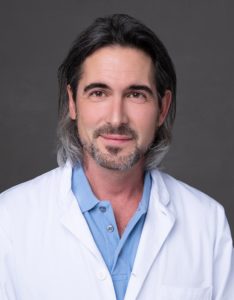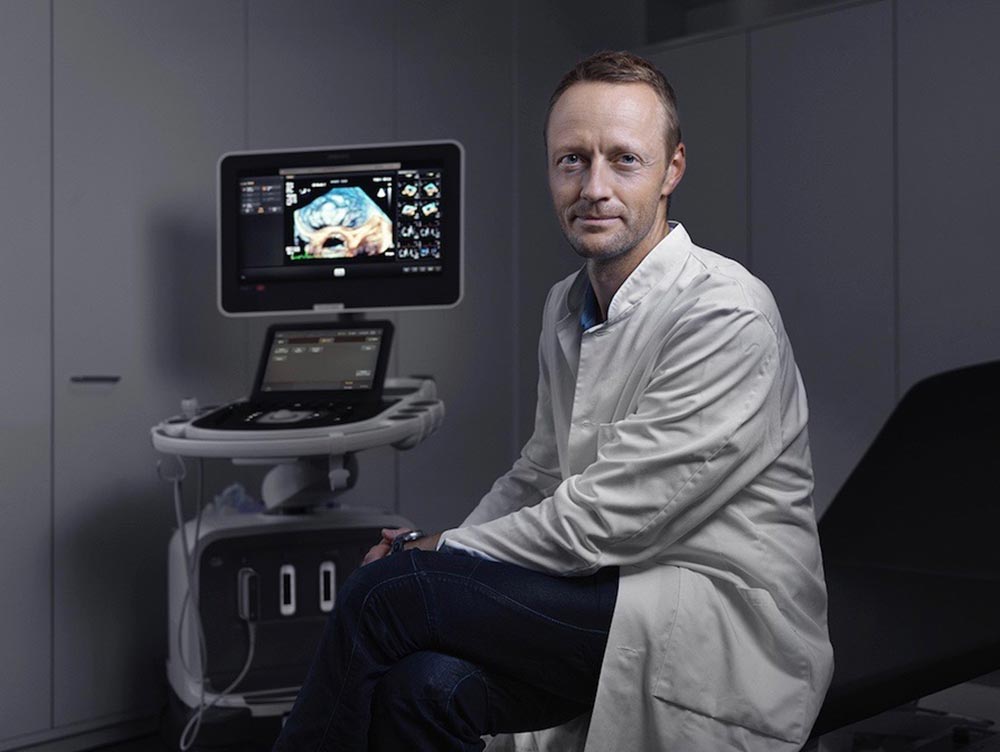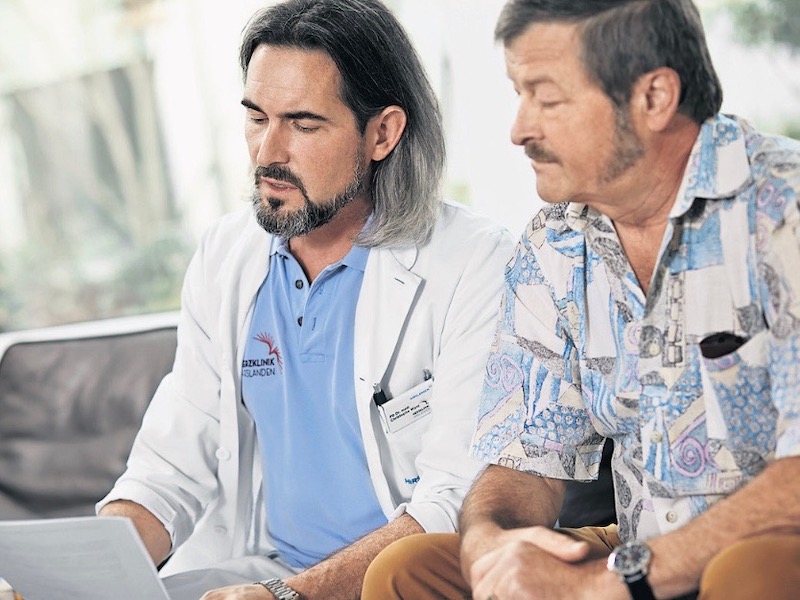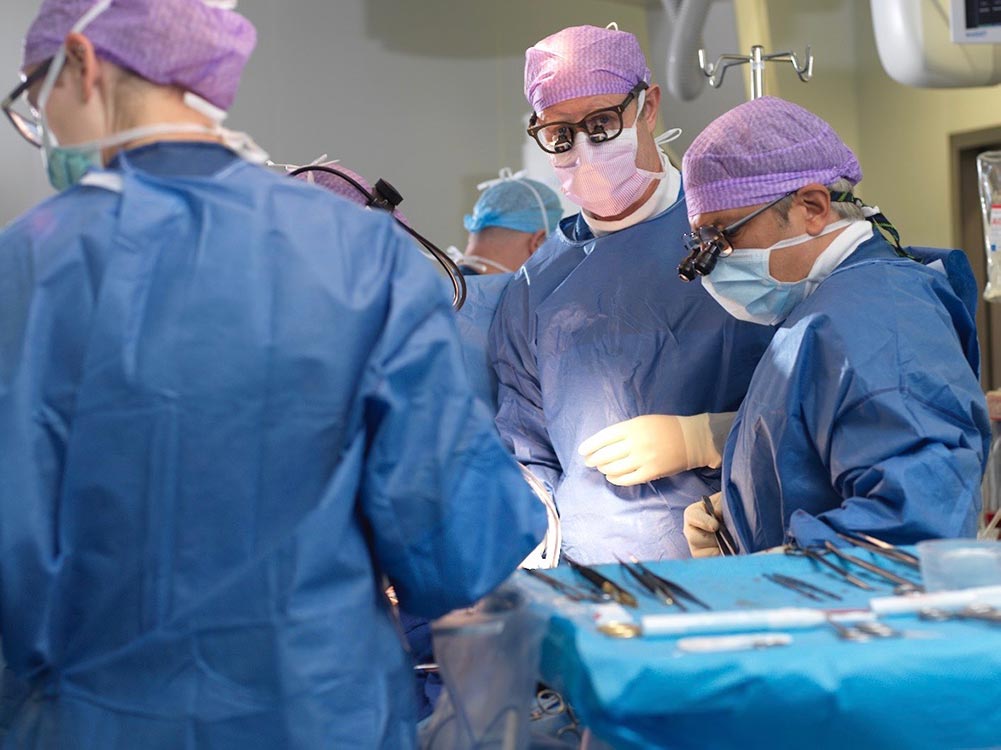Every heart loves movement
01 February 2018
Interview with Prof. Dr. med. Christophe Wyss

Prof. Dr. med. Christophe Wyss - Interventional Cardiology - HerzKlinik Hirslanden
Many factors influence heart health. Cardiologists agree: sport and exercise are equally good for the healthy and the sick heart. As so often, however, it depends on the right dosage.
Those who get enough exercise prevent secondary damage that can be dangerous for the heart. "Obesity, blood sugar, blood pressure and cholesterol are major risk factors for coronary heart disease, such as blockages of the coronary arteries and heart attacks," explains cardiologist Christophe Wyss from Herzklinik Hirslanden. All four risk factors can be positively influenced by exercise as well as a healthy diet and not smoking.
How much exercise is enough for the heart?
But how intensively and how often should you exercise if you are neither a super athlete nor a workout fanatic? To reduce the risk to the cardiovascular system and maintain heart health, the European Society of Cardiology recommends 150 minutes of moderate exercise or, alternatively, 75 minutes of intense exercise per week. Moderate means, for example, dancing, brisk walking, vacuuming, mowing the lawn or golfing. Intensive activities are jogging, cycling, swimming lengths or even a single on the tennis court. What sounds like little quickly becomes a challenge in everyday life. "30 minutes of moderate aerobic exercise five days a week - that's hardly feasible for many," confirms Wyss. That's why he recommends that sporty people incorporate as much exercise as possible into their daily routine. "Taking the stairs instead of the elevator" or "getting off one stop earlier" are proven classics.
Not from zero to one hundred
Anyone who, at 50, suddenly gets the idea of signing up for the marathon in New York because their body has been shortchanged over the last ten years is taking a risk. "High loads from a standing start are dangerous for an untrained body," Wyss clarifies. But the heart attack patient is by no means always the smoking, overweight diabetic of advanced age. Hard physical exertion can pro-voke a heart attack even in well-trained athletes. For example, if there are undetected congenital malformations of coronary arteries or undetected heart muscle disease. "40 percent of heart attacks are due to a genetic predisposition," explains Christophe Wyss. And despite intensive research, cardiology still knows very little about the genetic causes.
Knowing the individual risk profile
The individual risk of heart attack can be examined in a cardiovascular consultation. The cardiologist compares blood pressure, cholesterol profile, family history, smoking status and other factors with comprehensive databases to determine a statistical 10-year risk profile. "These profiles are statistical probabilities, not absolute prognoses," Wyss emphasizes, "yet they can be useful for men over 40 and for women over 50."
What to do after a heart attack?
Whereas doctors used to automatically prescribe rest and recuperation for heart patients, we now know that heart attacks and sport are not mutually exclusive. On the contrary. "Exercise reduces the risk of recurrence, shortens the recovery time and promotes health in a holistic way," Wyss emphasizes. However, the training should take place under guidance and in consultation with the attending physician, because the type and severity of the heart attack or heart condition determines the intensity. The so-called heart groups also show a very good effect after a heart attack (for a list, see swissheartgroups.ch). According to Wyss, these group training sessions are not only useful after a heart attack, but also as an effective preventive measure, especially for people with a high risk profile.
(Text source: Clau Isenring)
More reports
Cardiac Imaging (Heart Imaging)
Techniques of imaging the heart (cardiac imaging): Imaging the heart (cardiac imaging) is indispensable for making a diagnosis....
HerzTeam: Experience is decisive
The experience of the heart team is crucial Stenosis and leakage of the heart valve are among the most common structural heart diseases. The...
Heart attack - Precious minutes
Every minute is precious in a heart attack The earlier a heart attack is treated, the higher the chance of survival and the...
Successful reconstruction of the tricuspid valve
Ernst Spalinger has confidence in his heart again. After the operation on the tricuspid valve, fear and shortness of breath are blown away....
Minimally invasive heart surgery
Prof. Dr. Jürg Grünenfelder, specialist in cardiac and thoracic vascular surgery at Herzklinik Hirslanden, is a specialist in minimally invasive...
Structural heart disease
What is structural heart disease? Structural heart disease refers to diseases of the heart that predominantly affect one of the four heart valves,...
All specialists at the Heart Valve Center of Herzklinik Hirslanden
Prof. Dr. med. ROBERTO CORTI
Interventional Cardiology
Prof. Dr. med. JÜRG GRÜNENFELDER
Cardiac Surgery
MD. THIERRY AYMARD
Cardiac Surgery
PD Dr. med. PATRIC BIAGGI
Cardiology | Imaging
Prof. Dr. med. OLIVER GÄMPERLI
Interventional Cardiology
PD Dr. med. DAVID HÜRLIMANN
Cardiology | Rhythmology
Dr. med. IOANNIS KAPOS
Cardiology | Imaging
MD. SILKE WÖRNER
Cardiology | Imaging
Prof. Dr. med. GEORG NOLL
Cardiology | Prevention
MD. IVANO REHO
Cardiology | Aortic Aneurysm
PD Dr. med. (H) DIANA RESER
Cardiac Surgery
Prof. Dr. med. JAN STEFFEL
Cardiology | Rhythmology
Prof. Dr. med. PETER M. WENAWESER
Interventional Cardiology
Prof. Dr. med. CHRISTOPHE WYSS
Interventional Cardiology





